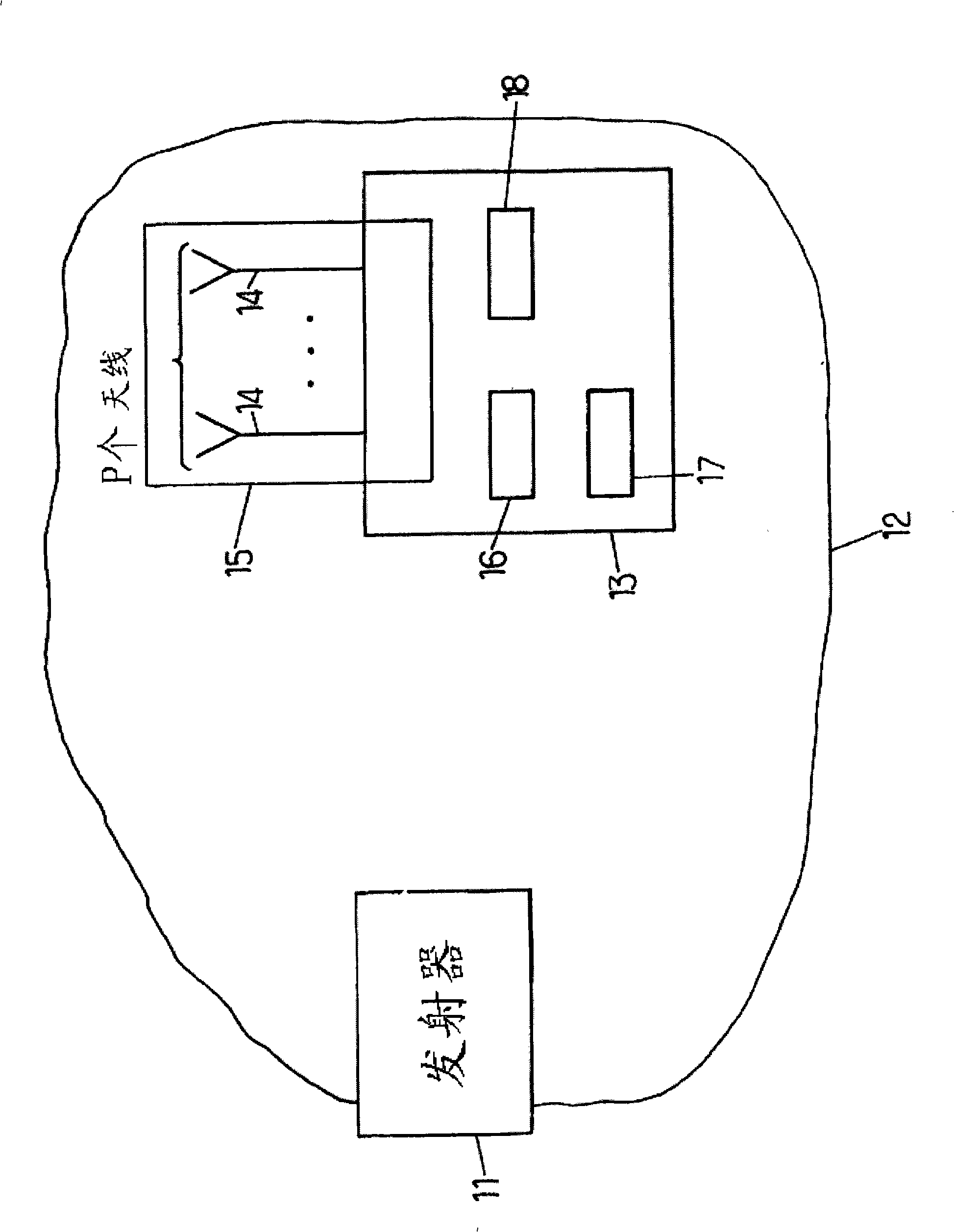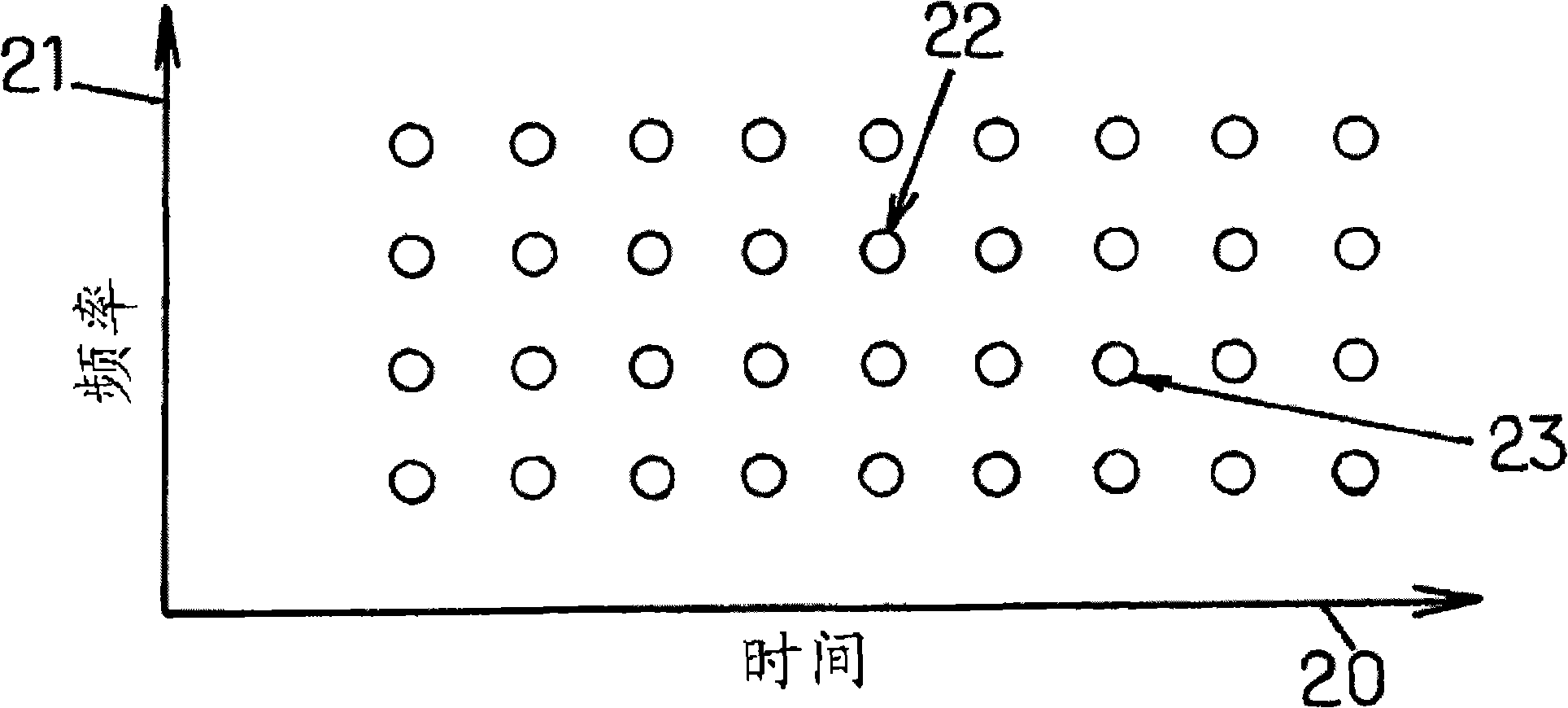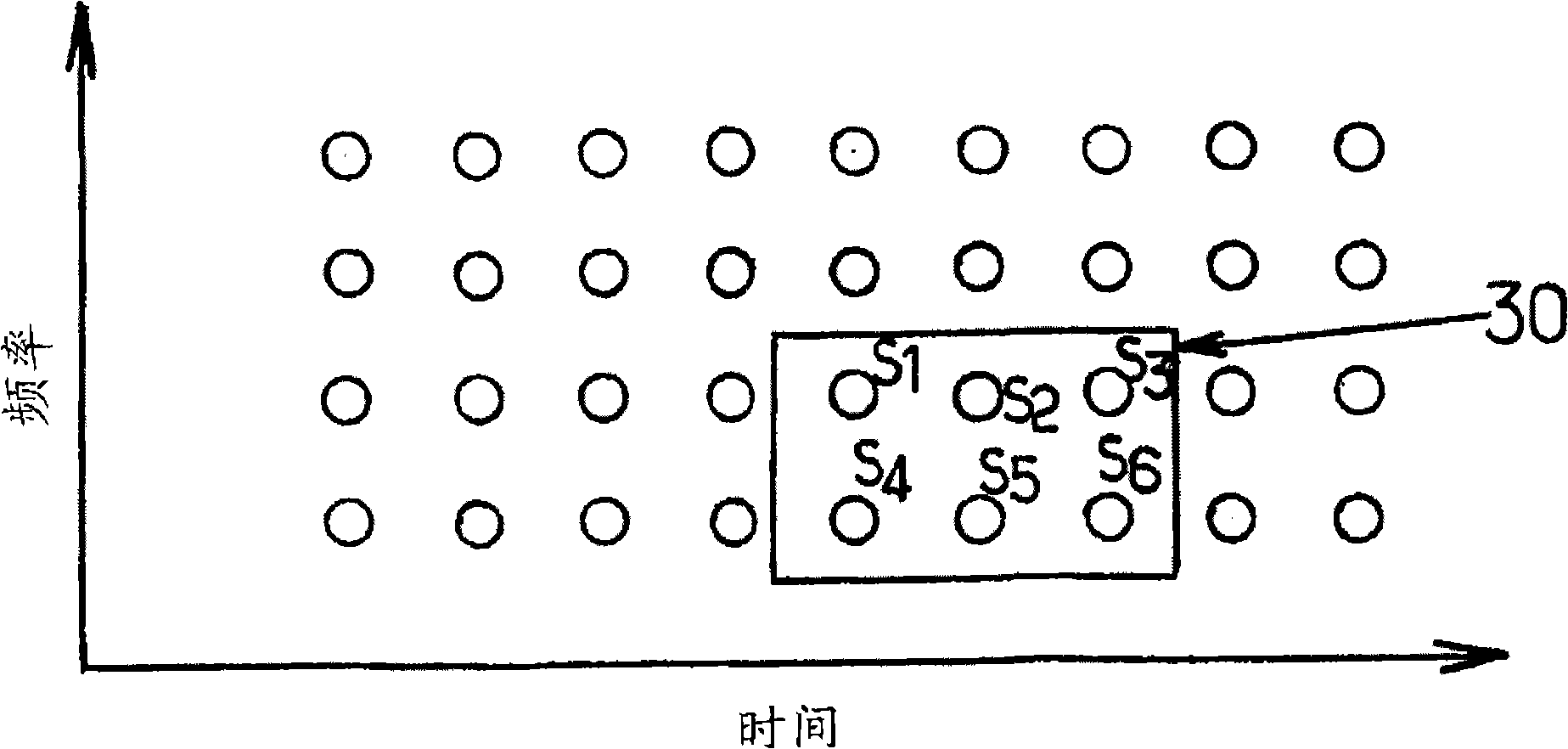Noise power interpolation in a multi-carrier system
A technology of noise power and estimated value, which is applied in the field of receiving OFDM type signals, and can solve the problems of reducing the signal-to-noise ratio, the change of the received signal and the transmitted signal, etc.
- Summary
- Abstract
- Description
- Claims
- Application Information
AI Technical Summary
Problems solved by technology
Method used
Image
Examples
Embodiment Construction
[0032] The application of the present invention in a multi-carrier system such as an OFDM (Orthogonal Frequency Division Multiplexing) system will be described below. The system can be used for traditional OFDM transmission, and can also be used for OFDM / IOTA (Isotropic Orthogonal Transform Algorithm) type transmission and OFDM / OQAM (Offset Quadrature Amplitude Modulation, Offset Quadrature Amplitude Modulation) type transmission. , published in June 1995 by Bernard LE FLOCH et al. in the paper entitled "Coded Orthogonal Frequency Division Multiplex" ("Coded Orthogonal Frequency Division Multiplex", Bernard LEFLOCH et al. , Proceedings of the IEEE, Vol.83, No.6, June 1995) gave an example definition of an OFDM-structured orthogonal time / frequency network. In particular, document FR19950005455 describes a structure suitable for OFDM / IOTA type transmission.
[0033] This description is not restrictive, and it is to be noted that the invention may be applied simply and effective...
PUM
 Login to View More
Login to View More Abstract
Description
Claims
Application Information
 Login to View More
Login to View More - R&D
- Intellectual Property
- Life Sciences
- Materials
- Tech Scout
- Unparalleled Data Quality
- Higher Quality Content
- 60% Fewer Hallucinations
Browse by: Latest US Patents, China's latest patents, Technical Efficacy Thesaurus, Application Domain, Technology Topic, Popular Technical Reports.
© 2025 PatSnap. All rights reserved.Legal|Privacy policy|Modern Slavery Act Transparency Statement|Sitemap|About US| Contact US: help@patsnap.com



